Other names Sweet potato | Place of origin Italy | |
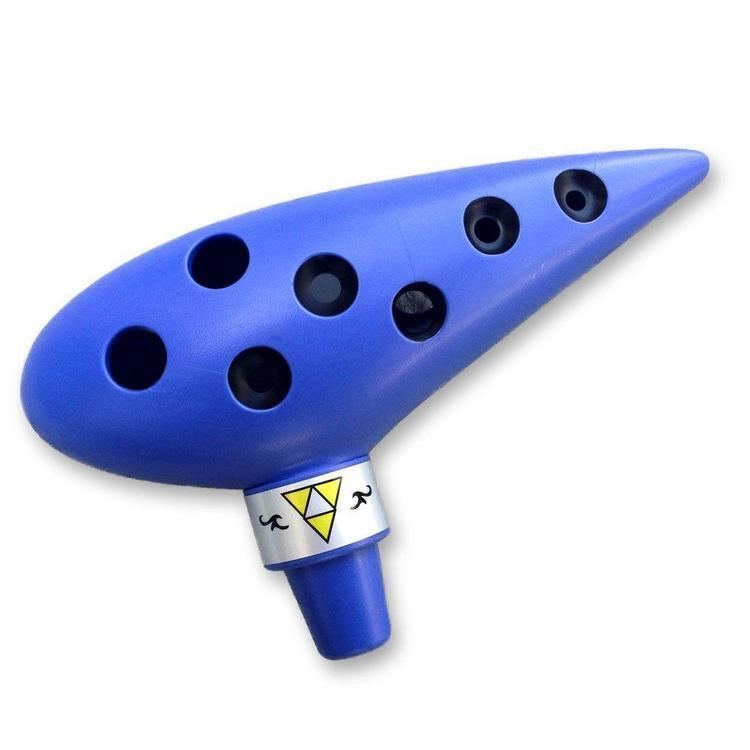 | ||
Hornbostel–Sachs classification 421.221.42(Vessel flute with duct and fingerholes) Classifications Wind instrument, Woodwind instrument, Aerophone | ||
Beautiful ocarina harp bagpipe violin piano music instrumental music
The ocarina /ɒkəˈriːnə/ or /oʊkəˈriːnə/ is an ancient wind musical instrument—a type of vessel flute. Variations exist, but a typical ocarina is an enclosed space with four to twelve finger holes and a mouthpiece that projects from the body. It is traditionally made from clay or ceramic, but other materials are also used—such as plastic, wood, glass, metal, or bone. An example of an ocarina made of an animal horn is the medieval German gemshorn.
Contents
- Beautiful ocarina harp bagpipe violin piano music instrumental music
- Guy plays zelda s lullably with musical instrument ocarina from the original zelda game
- History
- Types
- Tone productionacoustics
- Musical notation and tablature
- Similar instruments
- References
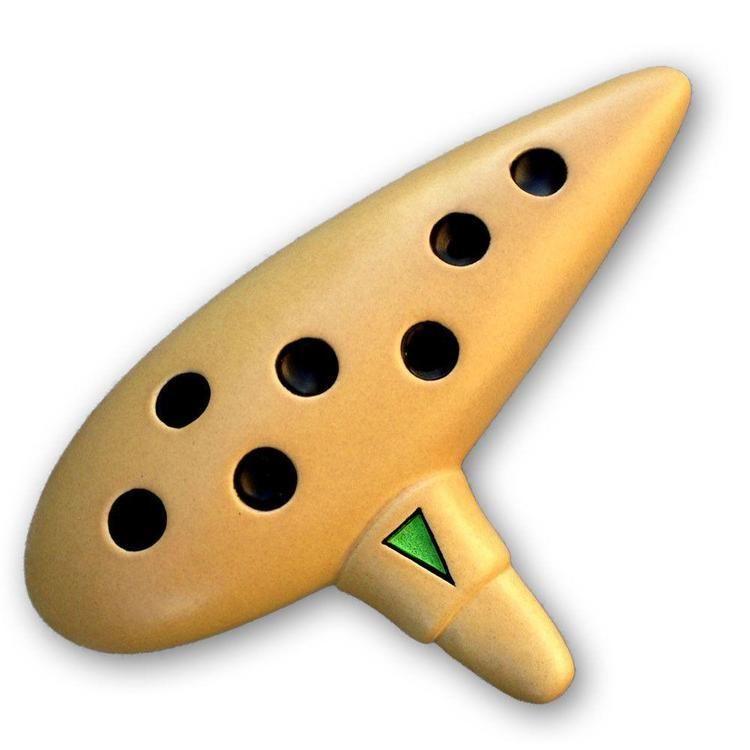
Guy plays zelda s lullably with musical instrument ocarina from the original zelda game
History
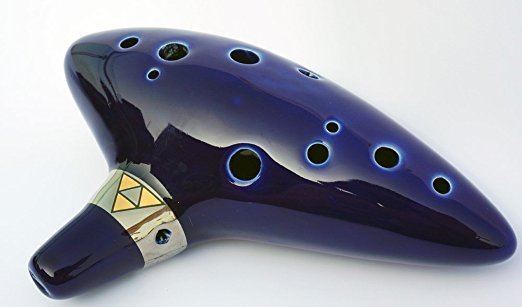
The ocarina belongs to a very old family of instruments, believed to date back over 12,000 years. Ocarina-type instruments have been of particular importance in Chinese and Mesoamerican cultures. For the Chinese, the instrument played an important role in their long history of song and dance. The ocarina has similar features to the Xun (塤), another important Chinese instrument (but is different in that Ocarina uses an internal duct, whereas Xun is blown across the outer edge). In Japan, the traditional ocarina is known as the tsuchibue (kanji: 土笛; literally "earthen flute"). Different expeditions to Mesoamerica, including the one conducted by Cortés, resulted in the introduction of the ocarina to the courts of Europe. Both the Mayans and Aztecs produced versions of the ocarina, but it was the Aztecs who brought Europe the song and dance that accompanied the ocarina. The ocarina went on to become popular in European communities as a toy instrument.
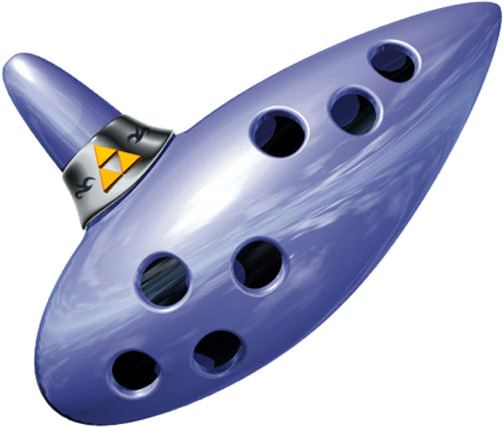
One of the oldest ocarinas found in Europe is from Runik, Kosovo. The ocarina is a Neolithic flute-like wind instrument and was named Runik Ocarina, the earliest prehistoric musical instrument ever recorded in Kosovo. The modern European ocarina dates back to the 19th century, when Giuseppe Donati from Budrio, a town near Bologna, Italy transformed the ocarina from a toy, which only played a few notes, into a more comprehensive instrument (known as the first "classical" ocarinas). The word ocarina in the Bolognese dialect of the Emiliano-Romagnolo language means "little goose." The earlier form was known in Europe as a gemshorn, which was made from animal horns of the chamois (Dutch: gems).
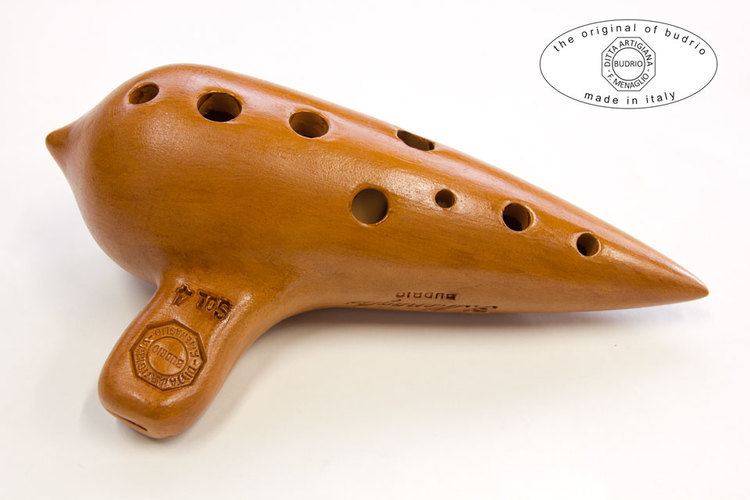
György Ligeti called for four ocarinas (to be performed by woodwind players doubling their own instruments) in his Violin Concerto.
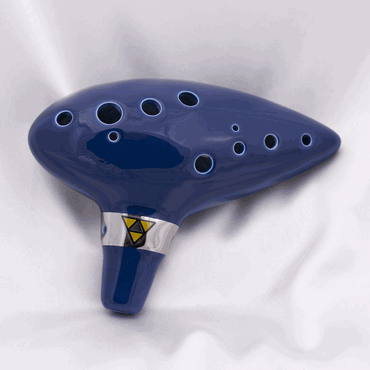
In 1998, the ocarina was prominently featured in the Nintendo 64 video game The Legend of Zelda: Ocarina of Time, attracting a marked increase in interest and a dramatic rise in sales of the instrument. It was not the first time an ocarina was featured The Legend of Zelda series, with the first appearance being as the "Magic Flute" in 1991's The Legend of Zelda: A Link To The Past.
Types
There are many different styles of ocarinas varying in shape and the number of holes:
Several makers have produced ocarinas with keys, mostly experimentally, beginning in the late 19th century. Keys and slides either expand the instrument's range, help fingers reach holes that are widely spaced, or play notes not in the native key of the instrument.
Tone production/acoustics
See Vessel flute#Acoustics
How an ocarina works:
- Air enters through the windway
- Air strikes the labium, producing sound
- Air pulses in and out of the ocarina, as the vessel resonates a specific pitch (see Helmholtz resonator)
- Covering holes lowers the pitch; uncovering holes raises the pitch
The airstream is directed on the labium by a fipple or internal duct, which is a narrowing rectangular slot in the mouthpiece, rather than relying on the player's lips as in a transverse flute. Like other flutes, the airstream alternates quickly between the inner and outer face of the labium as the pressure in the ocarina chamber oscillates. At first the sound is a broad-spectrum "noise" (i.e. "chiff"), but those frequencies that are identical with the fundamental frequency of the resonating chamber, (which depends on the fingering), as well as its overtones to a lesser extent, are selectively amplified. The ocarina, unlike other vessel flutes, has the unusual quality of not relying on the pipe length to produce a particular tone. Instead the tone is dependent on the ratio of the total surface area of opened holes to the total cubic volume enclosed by the instrument. This means that, unlike a flute or recorder, sound is created by resonance of the entire cavity and the placement of the holes on an ocarina is largely irrelevant – their size is the most important factor. Instruments that have toneholes close to the voicing/embouchure should be avoided, however; as an ocarina is a Helmholtz resonator, this weakens tonal production.
The resonator in the ocarina can create overtones, but because of the common "egg" shape, these overtones are many octaves above the keynote scale. In similar Helmholtz resonator instruments with a narrow cone shape, like the Gemshorn or Tonette, some partial overtones are available. The technique of overblowing to get a range of higher pitched notes is possible with the ocarina but not widely used because the resulting note is not "clean" enough, so the range of pitches available is limited to a 12th. Some Ocarina makers increase the range by designing double- or triple-chambered ocarinas (sometimes simply referred to as double or triple ocarinas) tuned an octave or a tenth apart although some double ocarinas are not made to increase the range, but to play in harmony with the other chambers.
These double and triple ocarinas can also play chords. Different notes are produced by covering the holes, and by opening and closing more or less of the total hole area. The tone is then produced through the sound hole/embouchure. The tone can also be varied by changing blowing strength to bend pitch.
Musical notation and tablature
Ocarina music is written in three main ways. The most apparent is the use of sheet music. There are archives of sheet music either specifically written for ocarinas, or adapted from piano sheet music. Since some ocarinas are fully chromatic and can be played in professional musical situations, including classical and folk, sheet music is an ideal notation for ocarinas.
Second is the use of numerical tablature, which expresses the musical notes as numbers. Some makers have developed their own system of numerical tablature for their ocarinas, while others follow a more universal system where numbers correspond to different notes on the scale. This method is typically used by beginners who have not learned to read sheet music.
A third method uses a pictorial tablature similar to the ocarina's finger hole pattern, with blackened holes that represent holes to cover. The tablature represents the holes on the top of the ocarina, and, where necessary, the holes on the underside. This enables easy playing, particularly for beginners. The two most popular tabulature systems are:
Depending on the artist, some may write a number or figure over the picture to depict how many beats to hold the note.
Similar instruments
Other vessel flutes include the Chinese xun and African globe flutes. The xun (simplified Chinese: 埙; traditional: 塤; pinyin: xūn) is a Chinese vessel flute made of clay or ceramic. It is one of the oldest Chinese instruments. Shaped like an egg, it differs from the ocarina in being side-blown, like the Western concert flute, rather than having a recorder-like mouthpiece (a fipple or beak). Similar instruments exist in Korea (the hun) and Japan (the tsuchibue).
A related family of instruments is the closed-pipe family, which includes the panpipes and other instruments that produce their tone by vibrating a column of air within a stopped cylinder.
The old fashioned jugband jug also has similar properties.
The traditional German gemshorn works nearly the same way as an ocarina. The only difference is the material it is made from: the horn of a chamois, goat, or other suitable animal.
The borrindo is a simple hollow clay ball with three to four fingering holes, one hole slightly larger than the other three, which are smaller and of equal size to one another. The holes are arranged in an isosceles triangular form. The borrindo is made out of soft alluvial clay available in plenty everywhere in the central Indus Valley. Being of the simplest design, it is made even by children. Some adults make fine borrindos of larger size, put pottery designs on them, and bake them. These baked borrindos, with pottery designs, are the later evolved forms of this musical instrument, which appears to have previously been used in its simple unbaked form for a long time. The sound notes are produced by blowing somewhat horizontally into the larger hole. Finger tips are placed on smaller holes to regulate the notes. Its ease of play makes it popular among children and the youth.
